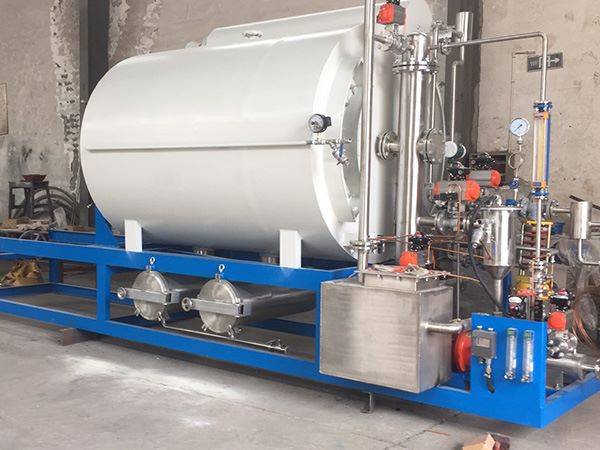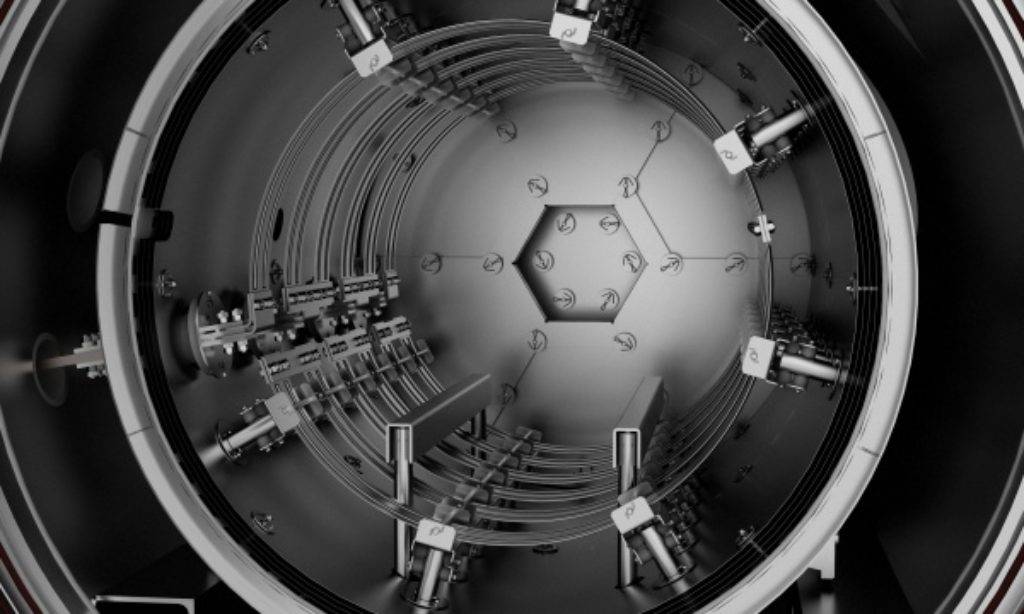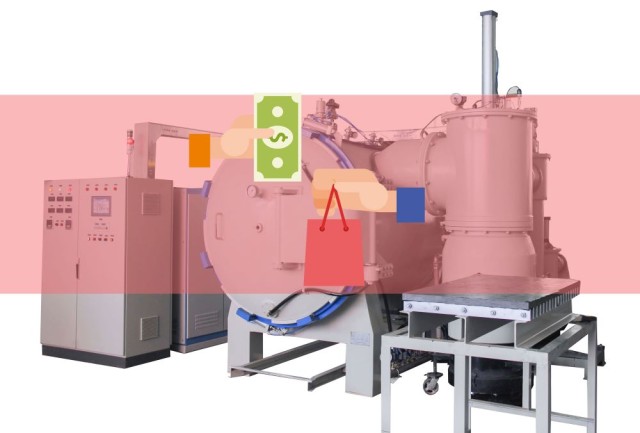Introduction to Vacuum Heat Treatment Furnaces
Types and Applications
Vacuum heat treatment furnaces represent a sophisticated class of equipment designed to perform a range of heat treatment processes, including brazing, quenching, tempering, and annealing. These furnaces are instrumental in enhancing the mechanical properties of materials, making them indispensable in sectors such as aerospace, automotive, and metalworking.
For instance, in the aerospace industry, the need for materials that can withstand extreme conditions is paramount. Vacuum heat treatment furnaces are employed to improve the strength, hardness, and corrosion resistance of components used in aircraft and spacecraft. Similarly, in the automotive sector, these furnaces are crucial for producing high-performance engine parts and structural components that must endure rigorous operational conditions.
| Industry | Applications |
|---|---|
| Aerospace | Aircraft and spacecraft components, enhancing strength and corrosion resistance. |
| Automotive | Engine parts, structural components, improving durability and performance. |
| Metalworking | Tool and die manufacturing, ensuring precision and longevity of tools. |
Beyond these sectors, vacuum heat treatment furnaces find extensive use in the production of industrial tools and molds, where maintaining precise dimensions and high durability is essential. The versatility and effectiveness of these furnaces underscore their widespread adoption across various industrial applications.
Classification of Furnaces
Vacuum furnaces are classified based on their specific applications in heat treatment processes. This categorization helps in selecting the appropriate furnace for particular industrial needs, ensuring optimal performance and material properties. The primary classifications include:
-
Vacuum Quenching Furnaces: These are designed for rapid cooling of materials, typically after heating to achieve desired metallurgical properties. The rapid cooling process, known as quenching, helps in hardening the material, making it more resistant to wear and deformation.
-
Vacuum Tempering Furnaces: These furnaces are used to relieve internal stresses in materials that have been previously hardened. Tempering involves heating the material to a specific temperature below the critical point and then cooling it slowly. This process enhances toughness and ductility while maintaining hardness.
-
Vacuum Annealing Furnaces: Annealing is a heat treatment process that involves heating the material to a specific temperature and then cooling it at a controlled rate. This process softens the material, improves its machinability, and reduces internal stresses. Vacuum annealing furnaces are particularly useful for treating materials that require high purity and minimal oxidation.
Each type of vacuum furnace is engineered to meet specific heat treatment requirements, ensuring that materials undergo the precise thermal cycles necessary for achieving the desired mechanical and physical properties.
Selection Criteria for Vacuum Heat Treatment Furnaces
Understanding Requirements
To effectively select a vacuum heat treatment furnace, it is crucial to first identify the specific needs of the parts that require treatment. This involves a detailed analysis of several key factors:
-
Process Requirements: Determine the type of heat treatment process needed, whether it is brazing, quenching, tempering, or annealing. Each process has distinct requirements that must be met by the furnace.
-
Material Specifications: Understand the material composition of the parts. Different materials, such as steel, aluminum, or titanium, have varying thermal properties that affect the treatment process and the furnace's performance.
-
Shape and Size Considerations: The geometry and dimensions of the parts play a significant role in defining the furnace's technical specifications. For instance, a furnace designed for small, intricate parts may not be suitable for large, bulky components.
-
Performance Criteria: Establish the performance requirements, including the desired mechanical properties of the treated parts. This includes hardness, strength, and durability, which are influenced by the furnace's ability to maintain precise temperature control and uniform heating.
By thoroughly understanding these requirements, you can define the technical specifications for the furnace, ensuring it meets the necessary criteria for effective vacuum heat treatment.

Functional Needs
When selecting a vacuum heat treatment furnace, it is crucial to identify the specific functions required to meet your production and process needs. These functions can vary significantly depending on the type of materials being treated and the desired outcomes. For instance, oil quenching is often employed to achieve rapid cooling, which enhances the hardness and wear resistance of certain metals. Conversely, gas quenching provides a more controlled cooling environment, minimizing distortion and maintaining dimensional integrity.
Key Functional Requirements
| Function | Application |
|---|---|
| Oil Quenching | Enhances hardness and wear resistance in metals. |
| Gas Quenching | Provides controlled cooling to minimize distortion and maintain dimensions. |
| Annealing | Softens materials, reduces internal stresses, and improves machinability. |
| Tempering | Increases toughness and reduces brittleness after hardening. |
Each of these functions plays a vital role in the heat treatment process, and the choice of function should be aligned with the specific requirements of your production process. For example, if your goal is to produce components with high hardness and wear resistance, oil quenching might be the preferred method. On the other hand, if maintaining precise dimensions is critical, gas quenching would be more suitable.
In summary, understanding and specifying the necessary functions of the furnace is a critical step in ensuring that the selected equipment meets your production needs effectively. This holistic approach ensures that the furnace not only performs its intended tasks but also integrates seamlessly into your existing production workflow.
Technical Specifications
When selecting a vacuum heat treatment furnace, it is crucial to consider several key technical indicators that ensure both current operational needs and future development requirements are met. These specifications include the effective working area size, maximum loading capacity, maximum temperature, and cooling rate.
Effective Working Area Size
The effective working area size is a critical factor as it determines the quantity and size of parts that can be processed simultaneously. A larger working area can accommodate more parts, enhancing production efficiency, but it also requires a more robust and costly furnace design.
Maximum Loading Capacity
The maximum loading capacity refers to the weight the furnace can handle at any given time. This specification is particularly important for industries dealing with heavy components. Ensuring the furnace can handle the maximum anticipated load is essential for uninterrupted production and safety.
Maximum Temperature
The maximum temperature the furnace can achieve is another vital specification. Different materials require specific temperature ranges for optimal heat treatment. For instance, aerospace alloys may need temperatures exceeding 1000°C for certain processes like annealing or tempering. Ensuring the furnace can reach and maintain these temperatures is crucial for achieving desired material properties.
Cooling Rate
The cooling rate is equally significant as it affects the final properties of the treated material. Rapid cooling can lead to higher hardness and strength in steels, while slower cooling may be necessary for certain alloys to prevent cracking or distortion. The furnace's ability to control and achieve the desired cooling rate is essential for consistent and high-quality results.
These technical specifications should be meticulously chosen to align with both immediate operational requirements and future expansion plans. By doing so, businesses can ensure their investment in a vacuum heat treatment furnace is both practical and forward-looking.

Implementation and Feasibility
Design and Manufacturing
Collaborating with manufacturers is crucial in designing a vacuum heat treatment furnace that precisely meets your technical and functional requirements. This process involves detailed discussions to ensure the furnace's specifications align with your needs, such as the effective working area size, maximum loading capacity, and cooling rate.
To guarantee the furnace's performance, it is essential to select manufacturers with a proven track record in producing high-quality vacuum furnaces. Look for manufacturers who have successfully delivered similar projects and possess a robust quality assurance system. This system should include rigorous testing procedures and adherence to industry standards, ensuring the furnace meets all necessary technical parameters and performance standards.
Additionally, consider manufacturers who offer customization options, allowing for adjustments based on your specific process and material requirements. This flexibility ensures that the furnace not only meets current needs but is also adaptable to future developments in your production processes.
Acceptance and Testing
To ensure that the vacuum heat treatment furnace meets all technical parameters and performance standards, a comprehensive testing process is essential. This process encompasses both pre-acceptance and final acceptance tests, which are critical steps in validating the furnace's capabilities and reliability.
Pre-Acceptance Tests
Pre-acceptance tests are conducted before the furnace is officially accepted into service. These tests typically include:
- Functional Verification: Ensuring that all specified functions, such as oil quenching, gas quenching, annealing, and tempering, operate as intended.
- Performance Metrics: Measuring key technical indicators like the effective working area size, maximum loading capacity, maximum temperature, and cooling rate to confirm they align with the required specifications.
- Safety Checks: Verifying that all safety mechanisms and controls are functioning correctly to prevent operational hazards.
Final Acceptance Tests
Final acceptance tests are conducted after the furnace has undergone pre-acceptance testing and any necessary adjustments. These tests include:
- Process Validation: Conducting process validation tests to ensure that the furnace can consistently produce parts that meet the desired material properties and performance standards.
- Durability Testing: Evaluating the furnace's long-term performance and durability under various operational conditions to ensure it can withstand the rigors of industrial use.
- Documentation Review: Reviewing all technical documentation and test results to confirm that the furnace meets all contractual and regulatory requirements.
By rigorously following these acceptance and testing procedures, you can ensure that the vacuum heat treatment furnace is not only compliant with technical standards but also capable of delivering reliable and consistent performance in industrial applications.

Support and Budgeting
Required Supporting Conditions
To ensure the seamless operation of a vacuum heat treatment furnace, it is imperative to establish a robust infrastructure that supports its critical functions. This infrastructure encompasses several essential components, each playing a crucial role in maintaining the furnace's efficiency and longevity.
Firstly, power distribution is paramount. The furnace requires a stable and reliable power supply to operate effectively. Any fluctuations or interruptions in power can lead to inefficiencies or even damage the equipment. Therefore, it is recommended to install a dedicated power line specifically for the furnace, along with backup power sources to mitigate the risk of downtime.
Secondly, water supply is another critical element. Many vacuum heat treatment processes involve cooling stages that require a continuous and clean water supply. The water should be free from impurities to prevent contamination and ensure the cooling process is efficient. Additionally, a reliable water filtration system should be in place to maintain the quality of the water used.
Lastly, environmental controls are essential to create a conducive operating environment for the furnace. This includes maintaining appropriate temperature and humidity levels within the facility. Proper ventilation and air filtration systems should also be installed to prevent any airborne contaminants from affecting the furnace's performance.
| Infrastructure Component | Importance | Recommended Measures |
|---|---|---|
| Power Distribution | Ensures continuous operation | Dedicated power line, backup power sources |
| Water Supply | Supports cooling processes | Continuous clean water supply, water filtration system |
| Environmental Controls | Maintains optimal operating conditions | Temperature and humidity control, ventilation, air filtration |
By ensuring these supporting conditions are met, you can significantly enhance the performance and lifespan of your vacuum heat treatment furnace, thereby optimizing your industrial processes.
Economic Feasibility
The economic feasibility of investing in a vacuum heat treatment furnace is a critical consideration, driven by the potential revenue and profit enhancements that can be realized through improved production capabilities and superior product quality.
Firstly, enhanced production capabilities translate into higher output rates, which can significantly increase the volume of products manufactured within a given timeframe. This boost in production efficiency can lead to a reduction in per-unit production costs, thereby improving the overall profitability of the manufacturing process.
Secondly, improved product quality is a direct outcome of the precise temperature control and uniform heating provided by vacuum heat treatment furnaces. Higher quality products not only command premium prices in the market but also reduce the likelihood of defects and rework, further contributing to cost savings.
To quantify these economic benefits, consider the following key metrics:
| Metric | Description |
|---|---|
| Revenue Increase | Additional income generated from increased production volume and premium pricing. |
| Cost Reduction | Savings from reduced rework, lower energy consumption, and optimized production processes. |
| Profit Margin Boost | Enhanced profitability due to higher quality products and efficient production. |
In summary, the economic feasibility analysis underscores the financial advantages of investing in a vacuum heat treatment furnace, which are manifest in both increased revenue and reduced costs, ultimately leading to a higher profit margin.
Related Products
- Vacuum Heat Treat Sintering Brazing Furnace
- Vacuum Hot Press Furnace Machine Heated Vacuum Press
- Vacuum Heat Treat and Pressure Sintering Furnace for High Temperature Applications
- Molybdenum Vacuum Heat Treat Furnace
- Lab-Scale Vacuum Induction Melting Furnace
Related Articles
- Exploring Tungsten Vacuum Furnaces: Operation, Applications, and Advantages
- Mastering Vacuum Furnace Brazing: Techniques, Applications, and Advantages
- Comprehensive Guide to Vacuum Hot Press Furnace Application
- Vacuum Laboratory Furnaces in Advanced Materials Research
- Vacuum Induction Melting Furnace: Principle, Advantages, and Applications















